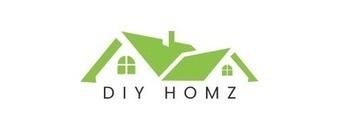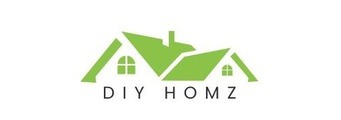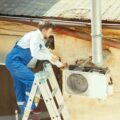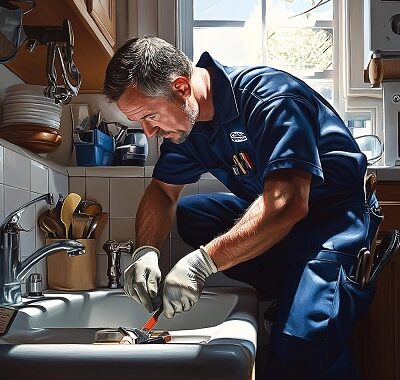Every home is equipped with a plumbing system that is critical to daily living, yet it often goes unnoticed until something goes wrong. Understanding the fundamentals of your home’s plumbing can help you troubleshoot problems, communicate more effectively with professionals, and perform basic maintenance. In this article, we’ll take a deep dive into how residential water systems function and provide essential tips on managing them.
Overview of the Residential Water System
At the core of your home’s plumbing is the water supply system and the drainage system. These two components ensure that clean water enters your home and waste water leaves efficiently. Let’s explore each of these systems in more detail.
Water Supply System
The water supply system is responsible for bringing fresh, clean water into your home. It works under high pressure to deliver water through pipes to various fixtures, such as sinks, showers, and toilets. Here’s a breakdown of the key components:
- Water Meter: This device measures the amount of water entering your home from the main municipal water line.
- Main Shutoff Valve: Located near the water meter, this valve allows you to stop water from entering your home in case of an emergency or repair.
- Water Heater: A crucial part of your plumbing system, the water heater ensures that you have hot water for showers, washing dishes, and other household needs.
- Cold and Hot Water Pipes: The water enters through a cold water pipe, and if hot water is needed, it is routed through the water heater.
Types of Water Pipes Used in Homes
- Copper Pipes: Known for their durability and corrosion resistance, copper pipes are commonly used for both hot and cold water systems.
- PVC (Polyvinyl Chloride): Lightweight and resistant to corrosion, PVC pipes are typically used for cold water systems.
- PEX (Cross-linked Polyethylene): Flexible and easy to install, PEX is often used in modern plumbing for both hot and cold water.
Drainage System
The drainage system works to remove wastewater from your home and dispose of it safely. This system relies on gravity to transport wastewater away, but it must be properly vented to allow air to escape and prevent clogs. The primary components include:
- Drain Pipes: These pipes carry wastewater from your sinks, toilets, and showers to the sewer line.
- Traps (P-Traps): Every drain has a P-trap, a curved section of pipe that prevents sewer gases from entering your home.
- Vent Pipes: Vent pipes allow air to enter the drainage system, ensuring wastewater flows freely and does not cause a vacuum in the pipes.
- Sewer Line: This pipe connects your home’s drainage system to the municipal sewer system or your septic tank.
Water Pressure: A Crucial Factor
Water pressure is essential for the efficient functioning of your plumbing system. High water pressure ensures water is delivered quickly to every fixture, but it can also cause wear and tear on pipes and appliances. Low water pressure, on the other hand, can be a sign of a leak, clog, or issue with the municipal supply. Here are some common causes of low water pressure:
- Leaky Pipes: Leaks reduce the pressure available for household fixtures.
- Clogged Pipes: Mineral deposits or debris can build up inside pipes, reducing water flow.
- Pressure Regulator Issues: A malfunctioning pressure regulator can result in abnormally low or high pressure.
Maintaining the right pressure in your system is critical to preventing damage to appliances and fixtures, as well as ensuring a reliable water supply.
Common Plumbing Issues and Solutions
Even with a well-maintained plumbing system, issues can arise. Understanding these problems will help you troubleshoot them quickly and prevent further damage.
Leaky Faucets
A leaky faucet is one of the most common plumbing problems in homes. It’s often caused by worn-out washers or O-rings inside the faucet. While the leak may seem minor, over time, it can lead to wasted water and higher utility bills. Here’s how to address it:
- Turn off the water supply to the faucet.
- Disassemble the faucet and inspect the washers or O-rings for wear.
- Replace the worn parts and reassemble the faucet.
Clogged Drains
Clogged drains are another frequent issue, usually caused by the accumulation of hair, grease, soap, or foreign objects in the pipes. For minor clogs, a plunger or drain snake may suffice. However, stubborn clogs may require professional intervention or the use of chemical drain cleaners.
- Plunging: Use a plunger to create suction and remove minor blockages.
- Drain Snake: This tool can physically remove clogs deep inside the pipe.
- Chemical Cleaners: Use with caution, as harsh chemicals can damage older pipes.
Running Toilets
A running toilet occurs when water continues to flow into the toilet bowl after flushing. This can be due to a faulty flapper, fill valve, or float mechanism. A running toilet can waste hundreds of gallons of water daily, making it essential to fix quickly.
- Check the flapper for signs of wear and replace if necessary.
- Inspect the fill valve to ensure it’s shutting off water flow when the tank is full.
- Adjust the float to maintain the correct water level in the tank.
Water Heater Issues
Water heaters can encounter several problems, such as insufficient hot water, strange noises, or leaks. In many cases, these issues are due to sediment buildup in the tank, a malfunctioning thermostat, or a worn-out heating element.
- Flush the water heater annually to remove sediment.
- Test the thermostat to ensure it’s functioning properly.
- Replace the heating element if it’s no longer heating the water.
Preventative Maintenance for a Healthy Plumbing System
To avoid major plumbing issues, it’s important to carry out regular preventative maintenance. A few simple tasks can extend the life of your system and save you money in the long run.
Inspect for Leaks
Regularly inspect your home’s plumbing for signs of leaks, including wet spots, water stains, and increased water bills. Catching leaks early can prevent water damage and reduce repair costs.
Flush Your Water Heater
As mentioned earlier, sediment buildup in your water heater can reduce efficiency and lead to breakdowns. Flushing the tank annually helps maintain optimal performance.
Clean Your Drains
Avoid pouring grease or large amounts of food down the kitchen drain, as these can cause clogs. Additionally, use strainers to catch hair and other debris in bathroom drains.
Check Your Water Pressure
Use a pressure gauge to monitor your home’s water pressure. If it exceeds 80 psi, consider installing a pressure-reducing valve to protect your plumbing system.
When to Call a Professional Plumber
While many plumbing issues can be handled by homeowners, there are times when professional help is necessary. If you encounter the following problems, it’s best to call a licensed plumber:
- Major leaks or pipe bursts that cause flooding.
- Sewer line clogs or backups that require specialized equipment.
- Persistent water heater problems that cannot be resolved with basic troubleshooting.
- Low water pressure that persists even after checking for obvious leaks or blockages.
Professional plumbers have the tools and expertise to resolve complex issues and prevent further damage to your home.
Conclusion
Understanding your home’s plumbing system is essential for maintaining its functionality and avoiding costly repairs. By familiarizing yourself with the water supply, drainage, and common issues like leaks, clogs, and water pressure problems, you can troubleshoot minor issues and know when to call a professional. Regular maintenance, such as inspecting for leaks and flushing your water heater, can extend the lifespan of your system and ensure it runs efficiently for years to come.





